World’s deepest zoo harbors clues to extraterrestrial life
Scientists have discovered a variety of living things deep below Earth’s surface
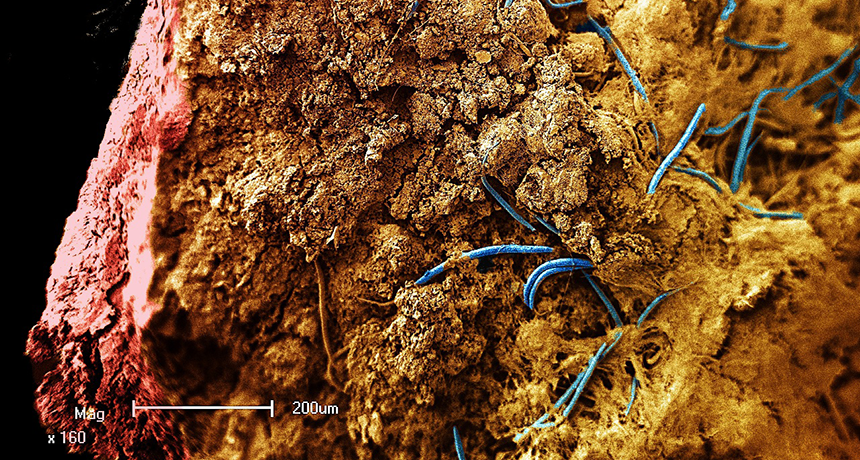
Life can be found even deep underground. For instance, these Monhystrella parvella worms (blue) were discovered living inside a stalactite almost a mile underground in South Africa’s Beatrix gold mine.
G. Borgonie
Maggie Lau works in a gold mine. But what she seeks here, more than a kilometer and a half (a mile) below the South African surface, may be more precious than gold. She’s looking for life.
It’s not easy work, lit only by headlamps. At times, it can feel as hot and humid as a sauna. Some spots smell like rotten eggs, due to sulfide gas emanating from holes dug in the rock.
Until about 20 years ago, scientists weren’t even sure if life existed deep below Earth’s surface. Then in 1992, Tullis Onstott and his colleagues discovered bacteria growing on the rocks retrieved from some 3 kilometers underground. Those rocks were more than 200 million years old, at least as old as the earliest dinosaurs. And the bacteria they analyzed may have survived from that time, Onstott now says.
He’s a geomicrobiologist — a scientist who studies how microbes interact with rocks and minerals. He heads the lab at Princeton University, in New Jersey, where Lau is now a graduate student.
Scientists like Lau and Onstott now travel the world over in search of deep life. They go deep underground in mines or caverns. They drill beneath the ocean floor and in oil fields. Some of these places are near-freezing; others are hotter than Death Valley.
“The challenge is in the hunt,” says Onstott. “It’s a fantastic journey.”
And these hunts are turning up a whole zoo of microscopic creatures. Some of the deeply buried critters feed on toxic chemicals such as arsenic and uranium. One day, other scientists might tap them to clean up toxic waste. Other microbes might produce useful substances, such as new types of germ-killing medicines known as antibiotics. And perhaps most intriguing, these organisms could also help biologists learn about life beyond Earth — true extraterrestrials.
Story continues below animation.
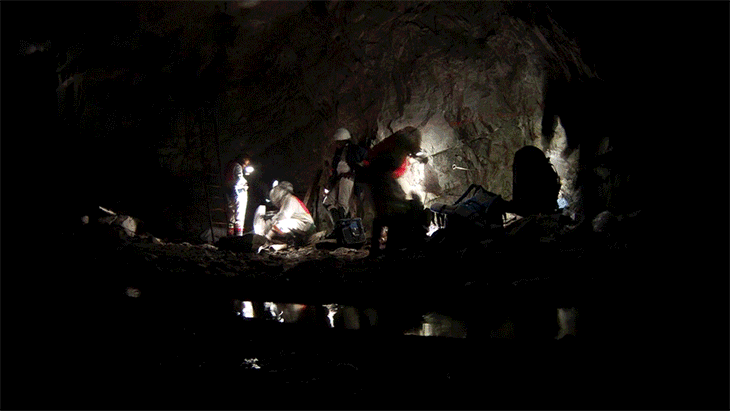
Life in the depths
To reach her research site in South Africa, Lau has to drop down a mine shaft in a cage. It descends the nearly mile down in about a minute. That’s so quick that Lau’s ears pop, making it feel like she’s on an amusement park ride.
Next, Lau may walk or even crawl another 1.5 kilometers through narrow corridors. Some are flooded with water, which she’ll have to wade through. Through it all, Lau and her colleagues carry heavy backpacks and wear knee-high boots and overalls. “Some of my friends joke that we look like the Ghostbusters,” she says.
In her search for new life, Lau collects water from bore holes. These are narrow holes drilled deep into the ground, usually to explore for minerals, natural gas or oil. Sometimes these bore holes tap into underground water. That water can be as hot as 54 degrees Celsius (130 degrees Fahrenheit). At some sites, even the rocks can be warm to touch.
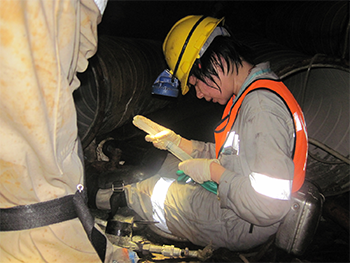
As she sits on the hard, rocky ground and collects water in different-sized bottles, Lau can get splashed anywhere and everywhere with the hot water. “As you collect it,” she says, “you get wet, and you feel like you have been through a water fight.” After this tiring work, “You’re physically and mentally exhausted.” Although “intense,” Lau adds that it also is “very rewarding.”
This water once flowed on the planet’s surface. Although the ground looks solid, it’s more like Swiss cheese. Tiny holes all over allow the water to flow through and down, down, down. But this is a very slow process. Water from the surface may take thousands of years to trickle down to where Lau now works. Some of the water she studies is more than 50,000 years old. And on its travels, that water may have collected living creatures.
There’s very little life in this extreme environment. But Lau leaves equipment to filter thousands of liters (gallons) of water over weeks or even months. She needs to filter all that water to collect as many living cells as possible. Each teaspoon of water contains just a few thousand cells. That may be only a millionth as many cells as exist in every pinch of backyard soil.
Researchers have now identified many types of bacteria in underground water. Many of them stick to each other and to rocks in a slimy community called a biofilm. To study these microbes, scientists try to grow them in the lab. But so far, they have been successful with only about one out of every 100 bacterial species from down here.
Scientists also chemically identify the pattern of building blocks — known as sequences — that make up the bacteria’s genetic material. Those chemical sequences have let them identify most of the bacteria, based on their DNA and RNA. (DNA encodes the instructions for building a cell. RNA is a related messenger molecule. It’s needed to carry out those instructions.)
Lau isn’t just identifying the bacteria that live down here, though. She’s also trying to identify their diet. If scientists learn what these bacteria eat, they might be able to feed it to them in the lab, in what’s called a growth, or culture, medium. That would let researchers study these bacteria more closely, learn what makes them tick and see if they might be useful to us. But food is hard to come by deep underground. There is no sunlight and no plants. What’s more, the water that the bacteria live in contains very little oxygen.
At this depth, any microbes must get all of their energy — food — from the rocks and water around them. Reactions between rocks and water can produce different substances, including hydrogen, methane and sulfates. Scientists initially expected that these extremely deep-dwelling bacteria must feed mainly on these three materials.
To her surprise, Lau discovered, many don’t.
Indeed, fewer than half of the bacteria feed on them, she reports. This minority of bacteria produce other chemicals that the rest of the bacteria feed on. “That’s kind of new to us,” says Lau. “We expect to see more of this kind of cooperation, especially in these environments where it is difficult,” she says.
Knowing on what these bacteria dine might also inform the search for alien life. How? Scientists often look for the chemicals that living things feed on when they can’t find the living things themselves. From what they’ve learned about the new deep microbes, researchers know they might have to expand what kinds of menu items to scout for.
A whole lot of worms
Most of the first research on deep life focused on bacteria. But they’re far from the only species down here. Take nematodes.
These tiny worms usually live in the soil and feed on bacteria. When Gaetan Borgonie heard there were bacteria deep underground, he wondered if there were also worms feeding on them. Borgonie is a zoologist at Extreme Life Isyensya in Gentbrugge, Belgium.
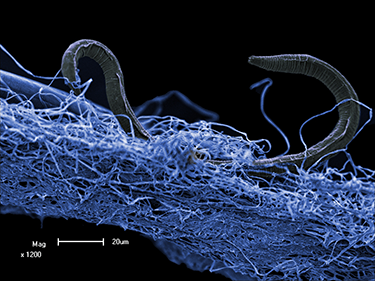
“After 20 years working on worms, you realize these animals are incredibly resistant,” he says. “I wondered if they could actually go very deep down.” To find out, he went looking for worms in the same gold mines Onstott studied. “It’s always an experience,” he says. Down in these mines, “I feel like an astronaut who walks on another planet.”
On Earth’s surface, nematodes are everywhere. “If I take an ordinary coffee cup and I go out and take a soil sample,” Borgonie says, “you will have hundreds of thousands of nematodes.” But deep underground, these worms are quite rare. Borgonie had to look through about 60 bathtubs worth of water to find a single worm. But he succeeded. And by doing so, he became the first to identify any kind of multicellular life deep beneath Earth’s surface. And once he spied nematodes, Borgonie started wondering what else might live at such depths.
So he sampled the underground water for two years. Along the way, “We found this whole zoo of animals,” he says, “much more than I anticipated.” These animals, though, were all too small to be seen with the naked eye. Many looked like little worms or caterpillars. Others were related to crabs and lobsters and resembled tiny shrimp. Some were in 12,000-year-old water from bore holes. Others lived in the stalactites hanging from the mine ceiling.
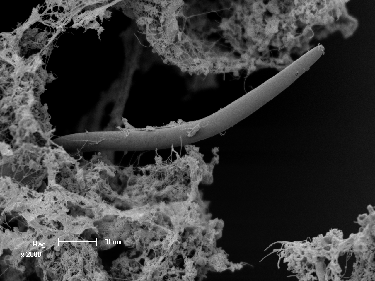
The worms and other creatures deep underground were mostly the same species found atop Earth’s surface, Borgonie showed. Almost all were feeding on the deep-living bacteria. Indeed, he now suspects, living so deep underground might actually be a good thing for these critters. Unlike at the surface, there are no predators down there to gobble them up. “For them, it’s like a summer camp,” quips Borgonie.
He never suspected he’d find such a wide variety of deep life. “This is actually very good news for people searching for life on Mars or [Jupiter’s Moon] Europa,” he says. Conditions deep beneath the surface of those space worlds could be similar to those deep inside the Earth. Maybe we’ll find a similar microscopic zoo beneath these other worlds.
Looking for alien life
Science may not have to wait long to apply the lessons learned from these underground creatures. Over the next several years, space missions will be exploring the solar system searching for signs of life.
Other planets and moons have much harsher conditions on their surface than those on Earth. “This means that if we were to find life elsewhere in the solar system, it’s going to be below the surface,” says Tori Hoehler. He works at the National Aeronautics and Space Administration’s Ames Research Center. As an astrobiologist there, he studies life on Earth and in space.
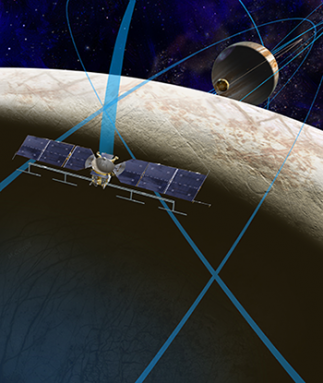
Life that would die on the surface of other planets or moons might be able to survive deep below. And reactions between underground rocks and water might provide the food needed to sustain them. Jupiter’s moon Europa or Saturn’s moon Enceladus may host rocks and water. But first scientists need a closer look. NASA will launch a mission to fly by Europa in the next five to 10 years. That could probe whether it might be able to support life.
Onstott also wonders if there might be creatures living deep below the Martian surface. Right now, it’s hard for life to survive on that planet’s surface. After all, it has almost no atmosphere. It’s also really cold and has no liquid water. But a long time ago, water may have flowed across the Martian landscape. And a thick atmosphere might have blanketed the planet. If there was Martian life on the surface then, maybe it trickled underground as critters have on Earth. “Down below they would have been nice and warm with plenty of water and plenty of energy,” says Onstott. That life could still be holed up there, captured in something like a time-capsule, waiting for us to dig it out.
Rovers have been exploring Mars for years. So far, none have ever done more than scrape the surface of the Red Planet. In 2018, though, the European Space Agency’s ExoMars Mission will get a deeper look. It won’t spy anywhere near as far below the surface as Lau and other scientists have searched back home. ExoMars plans to drill only about 2 meters (6.5 feet) down. That’s probably not deep enough to find life. But it might find signs that life once existed.
Onstott can’t wait. He imagines a time when humans might set up a base on Mars. Then we could drill deep below the surface, looking for water and life. Think about it, he says: “It would be an awesome undertaking.”







